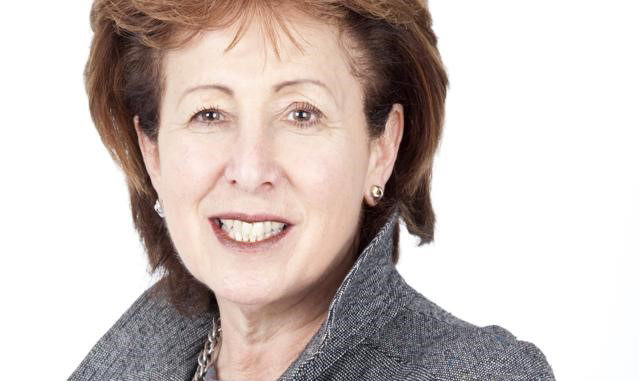
OpEds

Teen suicide – can it be prevented?
Published
3 years agoon
By
Marion ScherLike most people, when I first started writing about mental-health issues 26 years ago and heard the word “suicide”, I’d picture someone taking their own life because they had such enormous problems there was no other way out. And I’m sure when you hear that someone who appears to have “everything” has taken their own life, your first reaction is to ask why. They had so much to live for – a lovely home, family, money. Sadly those practical elements don’t always play a role in someone who sees suicide as the only way out.
Teen suicide
This week is Prevention of Teen Suicide Week, with the World Health Organization’s latest statistics showing that suicide is the third leading cause of death in 15-19 year olds – a shocking statistic and one that knows no distinction between race, culture, or class. The organisation’s research also shows that globally, depression is one of the leading causes of illness and disability among adolescents. The South African Depression and Anxiety Group (SADAG), which receives 1 400 calls a day (up from the pre-COVID-19 total of 600 a day) will certainly back these statistics up.
And these days, suicide isn’t just something adults or even teens do. While the numbers of teen suicides are on the rise, so is that of younger children, with SADAG reporting cases from the age of six upwards. Yes, you read that correctly – six years of age. What could possibly make these children and teens do something so desperate, so final?
One in three
This is the number of people who will suffer from mental-health issues in their lifetime. And, after seeing the reactions I got after publishing stories on mental-health issues, I knew it was time to do more, to help break the stigma and get people talking about this vital topic. So last month, my latest book: Surfacing – People Coping with Depression and Mental Illness (Bookstorm) was released featuring 11 people’s stories about depression, anxiety, bipolar disorder, and schizophrenia. Many of the brave people who feature in the book talk about how their condition resulted in them coming close to or attempting to take their own life – some while still at school.
Did they come from bad homes? Were they mistreated? Not at all. But ask whether they spoke to anyone, really spoke to their parents, teachers, or friends, and you’ll almost certainly find the answer is no. But the stories aren’t all doom and gloom. The light comes shining through after they find help.
The curse of bullying
A common theme that came out in many stories was school bullying. As Melissa du Preez, who suffers from clinical depression said, “Thank goodness being at school in the 90s meant we could go home and the bullying would stop. I’d hate to be at school today with social media.”
Daryl Brown never fitted in growing up in a small town in the Western Cape as a gay boy, and was constantly bullied, but thought, “It will get better at high school”, but it got worse. “It will get better at varsity”, but it didn’t. Finally a few years ago, he went to London to study further and his depression, which he wasn’t aware he was suffering from, drove him to jump in front of an underground train. He didn’t lose his life, but he lost both legs. It was only in hospital that he saw mental-health professionals for the first time, and discovered there was medication that could take away not just his physical pain, but his mental anguish. Most importantly, he saw a therapist he could open up to about his life. This may seem strange given his disability, but Daryl today, with his mental health under control and friends and family accepting his lifestyle choices, is living his best life ever and is truly happy.
Diane Naidoo wasn’t as lucky as Daryl’s family. Her beautiful 15-year-old daughter, Tenniel, said goodbye to her mom as Diane left home one day to visit family, only to get a call a few hours later telling her that Tenniel was in hospital and she must come back. What she found when she arrived is every parent’s nightmare. Her daughter, the light and love of her life, had hung herself just after Diane left home. There was no note, but learning more since then and realising there were tell-tale signs she could – but was unlikely to – pick up, Diane gives her time freely to talk to school children and parents to create awareness.
Speak and listen to your children
The one message that comes through in all these stories and the calls that SADAG receives, is that the single biggest problem today is communication. From the minute they get in the car or walk in the house, kids are on their electronic devices. That’s their world, and it excludes parents. Meals are rarely eaten around a table where parents can see how their day went and pick up on the often subtle nuances of their kid’s emotional state.
I started to write this book in 2018 – pre-COVID-19 – and since then, there’s not one person who hasn’t been affected in some way by this frightening, still largely unknown virus. People’s livelihoods have been lost and futures feel uncertain. Children are returning to school causing families more distress. But how many people have spoken to a mental-health professional about their anxiety, fear, and worries. Why? Mainly because the words “mental illness” mustn’t be uttered. The stigma of anyone knowing you’re seeing a therapist or worse, that you’re on an antidepressant, is just that – a stigma. One that desperately needs to be broken. Are you shy to tell people you’re diabetic or have a heart condition? No, of course not. They are physical diseases of the body whereas mental illness is a physical disease of the brain – one that can easily be treated. Don’t suffer in silence and above all, watch your children and don’t be afraid to ask for help. It’s ok not to be ok.
If you need help, please call the Cipla SADAG 24-hour mental-health helpline on 0800 456 789.
- Marion Scher is an award-winning journalist, author, and media consultant who for the past 33 years has worked in print and electronic media. Her latest book, ‘Surfacing – People Coping with Depression and Mental Illness’ is available through SADAG and at all good bookstores as well as online through distributors like Amazon and Loot.










